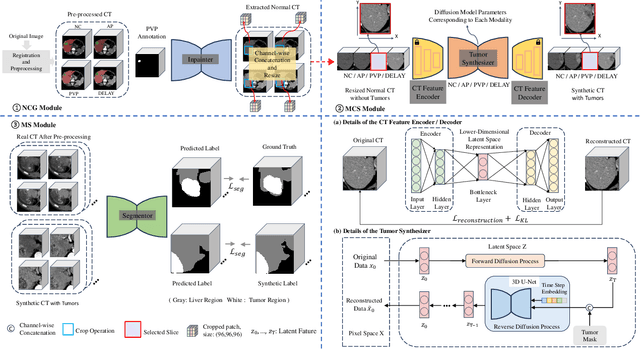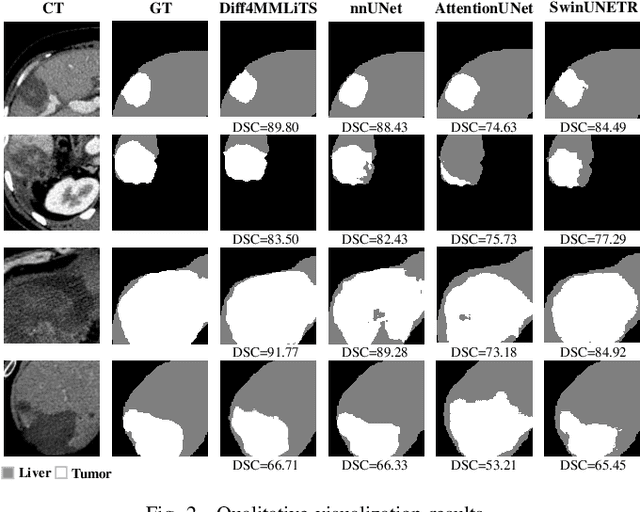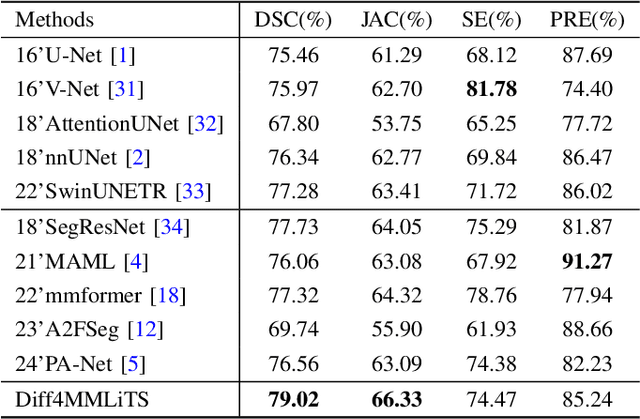Li Lin
AniMer+: Unified Pose and Shape Estimation Across Mammalia and Aves via Family-Aware Transformer
Aug 01, 2025Abstract:In the era of foundation models, achieving a unified understanding of different dynamic objects through a single network has the potential to empower stronger spatial intelligence. Moreover, accurate estimation of animal pose and shape across diverse species is essential for quantitative analysis in biological research. However, this topic remains underexplored due to the limited network capacity of previous methods and the scarcity of comprehensive multi-species datasets. To address these limitations, we introduce AniMer+, an extended version of our scalable AniMer framework. In this paper, we focus on a unified approach for reconstructing mammals (mammalia) and birds (aves). A key innovation of AniMer+ is its high-capacity, family-aware Vision Transformer (ViT) incorporating a Mixture-of-Experts (MoE) design. Its architecture partitions network layers into taxa-specific components (for mammalia and aves) and taxa-shared components, enabling efficient learning of both distinct and common anatomical features within a single model. To overcome the critical shortage of 3D training data, especially for birds, we introduce a diffusion-based conditional image generation pipeline. This pipeline produces two large-scale synthetic datasets: CtrlAni3D for quadrupeds and CtrlAVES3D for birds. To note, CtrlAVES3D is the first large-scale, 3D-annotated dataset for birds, which is crucial for resolving single-view depth ambiguities. Trained on an aggregated collection of 41.3k mammalian and 12.4k avian images (combining real and synthetic data), our method demonstrates superior performance over existing approaches across a wide range of benchmarks, including the challenging out-of-domain Animal Kingdom dataset. Ablation studies confirm the effectiveness of both our novel network architecture and the generated synthetic datasets in enhancing real-world application performance.
LEDOM: An Open and Fundamental Reverse Language Model
Jul 02, 2025Abstract:We introduce LEDOM, the first purely reverse language model, trained autoregressively on 435B tokens with 2B and 7B parameter variants, which processes sequences in reverse temporal order through previous token prediction. For the first time, we present the reverse language model as a potential foundational model across general tasks, accompanied by a set of intriguing examples and insights. Based on LEDOM, we further introduce a novel application: Reverse Reward, where LEDOM-guided reranking of forward language model outputs leads to substantial performance improvements on mathematical reasoning tasks. This approach leverages LEDOM's unique backward reasoning capability to refine generation quality through posterior evaluation. Our findings suggest that LEDOM exhibits unique characteristics with broad application potential. We will release all models, training code, and pre-training data to facilitate future research.
Preserving AUC Fairness in Learning with Noisy Protected Groups
May 24, 2025Abstract:The Area Under the ROC Curve (AUC) is a key metric for classification, especially under class imbalance, with growing research focus on optimizing AUC over accuracy in applications like medical image analysis and deepfake detection. This leads to fairness in AUC optimization becoming crucial as biases can impact protected groups. While various fairness mitigation techniques exist, fairness considerations in AUC optimization remain in their early stages, with most research focusing on improving AUC fairness under the assumption of clean protected groups. However, these studies often overlook the impact of noisy protected groups, leading to fairness violations in practice. To address this, we propose the first robust AUC fairness approach under noisy protected groups with fairness theoretical guarantees using distributionally robust optimization. Extensive experiments on tabular and image datasets show that our method outperforms state-of-the-art approaches in preserving AUC fairness. The code is in https://github.com/Purdue-M2/AUC_Fairness_with_Noisy_Groups.
NeUQI: Near-Optimal Uniform Quantization Parameter Initialization
May 23, 2025Abstract:Large language models (LLMs) achieve impressive performance across domains but face significant challenges when deployed on consumer-grade GPUs or personal devices such as laptops, due to high memory consumption and inference costs. Post-training quantization (PTQ) of LLMs offers a promising solution that reduces their memory footprint and decoding latency. In practice, PTQ with uniform quantization representation is favored for its efficiency and ease of deployment since uniform quantization is widely supported by mainstream hardware and software libraries. Recent studies on $\geq 2$-bit uniform quantization have led to noticeable improvements in post-quantization model performance; however, they primarily focus on quantization methodologies, while the initialization of quantization parameters is underexplored and still relies on the suboptimal Min-Max strategies. In this work, we propose NeUQI, a method devoted to efficiently determining near-optimal initial parameters for uniform quantization. NeUQI is orthogonal to prior quantization methodologies and can seamlessly integrate with them. The experiments with the LLaMA and Qwen families on various tasks demonstrate that our NeUQI consistently outperforms existing methods. Furthermore, when combined with a lightweight distillation strategy, NeUQI can achieve superior performance to PV-tuning, a much more resource-intensive approach.
Multi-Resolution Haar Network: Enhancing human motion prediction via Haar transform
May 19, 2025Abstract:The 3D human pose is vital for modern computer vision and computer graphics, and its prediction has drawn attention in recent years. 3D human pose prediction aims at forecasting a human's future motion from the previous sequence. Ignoring that the arbitrariness of human motion sequences has a firm origin in transition in both temporal and spatial axes limits the performance of state-of-the-art methods, leading them to struggle with making precise predictions on complex cases, e.g., arbitrarily posing or greeting. To alleviate this problem, a network called HaarMoDic is proposed in this paper, which utilizes the 2D Haar transform to project joints to higher resolution coordinates where the network can access spatial and temporal information simultaneously. An ablation study proves that the significant contributing module within the HaarModic Network is the Multi-Resolution Haar (MR-Haar) block. Instead of mining in one of two axes or extracting separately, the MR-Haar block projects whole motion sequences to a mixed-up coordinate in higher resolution with 2D Haar Transform, allowing the network to give scope to information from both axes in different resolutions. With the MR-Haar block, the HaarMoDic network can make predictions referring to a broader range of information. Experimental results demonstrate that HaarMoDic surpasses state-of-the-art methods in every testing interval on the Human3.6M dataset in the Mean Per Joint Position Error (MPJPE) metric.
Robust AI-Generated Face Detection with Imbalanced Data
May 04, 2025Abstract:Deepfakes, created using advanced AI techniques such as Variational Autoencoder and Generative Adversarial Networks, have evolved from research and entertainment applications into tools for malicious activities, posing significant threats to digital trust. Current deepfake detection techniques have evolved from CNN-based methods focused on local artifacts to more advanced approaches using vision transformers and multimodal models like CLIP, which capture global anomalies and improve cross-domain generalization. Despite recent progress, state-of-the-art deepfake detectors still face major challenges in handling distribution shifts from emerging generative models and addressing severe class imbalance between authentic and fake samples in deepfake datasets, which limits their robustness and detection accuracy. To address these challenges, we propose a framework that combines dynamic loss reweighting and ranking-based optimization, which achieves superior generalization and performance under imbalanced dataset conditions. The code is available at https://github.com/Purdue-M2/SP_CUP.
Rotational ultrasound and photoacoustic tomography of the human body
Apr 22, 2025Abstract:Imaging the human body's morphological and angiographic information is essential for diagnosing, monitoring, and treating medical conditions. Ultrasonography performs the morphological assessment of the soft tissue based on acoustic impedance variations, whereas photoacoustic tomography (PAT) can visualize blood vessels based on intrinsic hemoglobin absorption. Three-dimensional (3D) panoramic imaging of the vasculature is generally not practical in conventional ultrasonography with limited field-of-view (FOV) probes, and PAT does not provide sufficient scattering-based soft tissue morphological contrast. Complementing each other, fast panoramic rotational ultrasound tomography (RUST) and PAT are integrated for hybrid rotational ultrasound and photoacoustic tomography (RUS-PAT), which obtains 3D ultrasound structural and PAT angiographic images of the human body quasi-simultaneously. The RUST functionality is achieved in a cost-effective manner using a single-element ultrasonic transducer for ultrasound transmission and rotating arc-shaped arrays for 3D panoramic detection. RUST is superior to conventional ultrasonography, which either has a limited FOV with a linear array or is high-cost with a hemispherical array that requires both transmission and receiving. By switching the acoustic source to a light source, the system is conveniently converted to PAT mode to acquire angiographic images in the same region. Using RUS-PAT, we have successfully imaged the human head, breast, hand, and foot with a 10 cm diameter FOV, submillimeter isotropic resolution, and 10 s imaging time for each modality. The 3D RUS-PAT is a powerful tool for high-speed, 3D, dual-contrast imaging of the human body with potential for rapid clinical translation.
ImViD: Immersive Volumetric Videos for Enhanced VR Engagement
Mar 18, 2025Abstract:User engagement is greatly enhanced by fully immersive multi-modal experiences that combine visual and auditory stimuli. Consequently, the next frontier in VR/AR technologies lies in immersive volumetric videos with complete scene capture, large 6-DoF interaction space, multi-modal feedback, and high resolution & frame-rate contents. To stimulate the reconstruction of immersive volumetric videos, we introduce ImViD, a multi-view, multi-modal dataset featuring complete space-oriented data capture and various indoor/outdoor scenarios. Our capture rig supports multi-view video-audio capture while on the move, a capability absent in existing datasets, significantly enhancing the completeness, flexibility, and efficiency of data capture. The captured multi-view videos (with synchronized audios) are in 5K resolution at 60FPS, lasting from 1-5 minutes, and include rich foreground-background elements, and complex dynamics. We benchmark existing methods using our dataset and establish a base pipeline for constructing immersive volumetric videos from multi-view audiovisual inputs for 6-DoF multi-modal immersive VR experiences. The benchmark and the reconstruction and interaction results demonstrate the effectiveness of our dataset and baseline method, which we believe will stimulate future research on immersive volumetric video production.
A Dual-Perspective NLG Meta-Evaluation Framework with Automatic Benchmark and Better Interpretability
Feb 17, 2025Abstract:In NLG meta-evaluation, evaluation metrics are typically assessed based on their consistency with humans. However, we identify some limitations in traditional NLG meta-evaluation approaches, such as issues in handling human ratings and ambiguous selections of correlation measures, which undermine the effectiveness of meta-evaluation. In this work, we propose a dual-perspective NLG meta-evaluation framework that focuses on different evaluation capabilities, thereby providing better interpretability. In addition, we introduce a method of automatically constructing the corresponding benchmarks without requiring new human annotations. Furthermore, we conduct experiments with 16 representative LLMs as the evaluators based on our proposed framework, comprehensively analyzing their evaluation performance from different perspectives.
Diff4MMLiTS: Advanced Multimodal Liver Tumor Segmentation via Diffusion-Based Image Synthesis and Alignment
Dec 29, 2024



Abstract:Multimodal learning has been demonstrated to enhance performance across various clinical tasks, owing to the diverse perspectives offered by different modalities of data. However, existing multimodal segmentation methods rely on well-registered multimodal data, which is unrealistic for real-world clinical images, particularly for indistinct and diffuse regions such as liver tumors. In this paper, we introduce Diff4MMLiTS, a four-stage multimodal liver tumor segmentation pipeline: pre-registration of the target organs in multimodal CTs; dilation of the annotated modality's mask and followed by its use in inpainting to obtain multimodal normal CTs without tumors; synthesis of strictly aligned multimodal CTs with tumors using the latent diffusion model based on multimodal CT features and randomly generated tumor masks; and finally, training the segmentation model, thus eliminating the need for strictly aligned multimodal data. Extensive experiments on public and internal datasets demonstrate the superiority of Diff4MMLiTS over other state-of-the-art multimodal segmentation methods.
 Add to Chrome
Add to Chrome Add to Firefox
Add to Firefox Add to Edge
Add to Edge